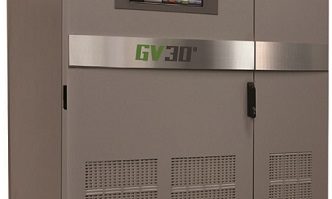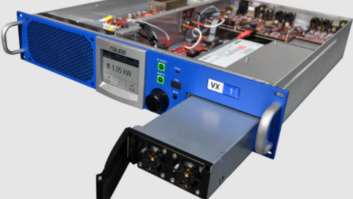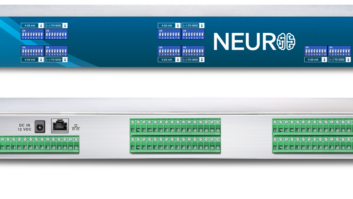Creating Compatible Content for Surround Radio May Be Challenging
No, it’s not a new PBS program; but the headline of our story may provide some drama in radio’s future.
Much of the current discussion regarding surround sound radio broadcasting has ignored one of the most obvious questions: Where’s the content coming from?
Unlike the television world, where plenty of cinematic, episodic and other (e.g., high-profile sports) content is already available in 5.1 discrete or matrixed surround sound, multichannel radio broadcasting today would face a dearth of material produced in any surround format.
Yes, a growing number of catalog hit albums have been remixed in 5.1 and released in DVD-A or SACD formats; but these few hundred titles represent a tiny fraction of the archive of material likely to be broadcast by radio stations.
Meanwhile, relatively few new releases are forthcoming in multichannel formats. This is not likely to change much or soon, given the tepid response that consumers have given to both the DVD-A and SACD formats, and the additional cost of producing a release in multichannel form – which typically requires a complete second remix session. (Interestingly, some of the most experienced multichannel music producers mix the 5.1 version first, then do the stereo.)
So we should not expect a landslide of support for discrete multichannel music sources upcoming, but rather expect stereo releases to remain the norm for the foreseeable future.
Note also that even those music releases that are made in multichannel format are issued in either Dolby Digital (AC-3 codec), Meridian Lossless Processing (MLP) or in uncompressed PCM, none of which is proposed as the format in which they would be broadcast on radio. Therefore a transcoding step would be required, which might introduce some degradation or potential for erroneous channel mapping, image loss, etc.
Upping the ante
More important, however, because most content broadcast in a radio surround format would originate as stereo for some time, creating a full-time surround audio service would require some upmixing, by which a multichannel signal would be derived automatically from a stereo audio source. This is just a nice way of saying “pseudo-surround,” and there is questionable value of doing this at the radio station vs. allowing surround-capable consumer equipment to do it at the user’s option.
Nevertheless, it is likely that if a radio station invests in and promotes surround-sound broadcasting, at least some (if not most) of its content will be upmixed, and the results will vary. Different upmixing devices will produce different surround effects on a given piece of audio content, so there will likely be some competition among manufacturers on the relative merits of their respective upmix algorithms, presets and variability options – much like stereo audio processing today.
Upmixing could be performed automatically or adaptively by a new processing box added to the station’s air chain, or take place in a pre-broadcast production step for manual control optimized to the particular content. But it’s most likely that broadcast audio processors will simply add multichannel upmix and processing capabilities – possibly along with some form of surround encoding for broadcast – to their feature sets.
To avoid double-encoding or other unintended artifacts, these automatic, real-time upmix processors will likely include detectors that determine whether incoming audio is already surround-encoded in some form. Elsewhere in the digital broadcast facility, there may be some form of signaling or file header that communicates whether and how a given audio file or stream is encoded, to simplify the world of mixed audio formats that many stations will encounter in the future.
(A new .WAV file format for surround audio was proposed at the Barcelona AES convention by Swedish Radio and D.A.V.I.D. GmbH, entitled “New File Format and Methods for Multichannel Sound in Broadcasting.”)
Downsizing
Meanwhile, the creation of a compatible surround/stereo/mono radio signal will also require the broadcaster to take discrete 5.1 audio source material and create a stereo signal from it – so-called downmixing. This is conceptually equivalent to summing a stereo signal to mono for the L+R/L-R signals used in the compatible stereo/mono multiplexes used by analog stereo FM and TV-audio broadcasting today. Unlike that very simple 2×1 mix, however, the folding down of a center and two surround channels (plus a subwoofer feed) into a stereo mix is not straightforward, and open to much interpretation and variation.
For example, for many years, Dolby has kept its downmix algorithms for its Dolby Surround/ProLogic and Dolby Digital formats proprietary, and maintained strict control on the compliance of licensed products to these algorithms. Meanwhile, the ITU currently is attempting to develop an open-standard downmix algorithm that will handle all current multichannel formats.
The primary reason for understanding how these downmix algorithms work is so that mixing engineers will know in advance how any content they mix in multichannel form will sound on non-multichannel (i.e., stereo or mono) listening systems. This applies equally to the music industry and to broadcasters, as they each develop compatible surround content.
Some of those broadcasters will produce local concerts, sports or other remote broadcasts in multichannel, but the most prevalent type of surround content (at least initially) is likely to be liners, promos, local spots and other station-signature interstitials. This is where a station’s production director can really have some fun and get listeners’ attention will cool surround effects. But it will be critical to know how these techniques play to the majority of the audience, who will hear this heavily surround-processed material in stereo or mono. For this, a reliable downmixing monitor system will be required, so any production can be auditioned in surround (perhaps even on various decoder formats), stereo and mono.
More on the nuances of multichannel radio broadcasting next time.











